I tracked my glucose levels for a month - here are the ways I'm changing my diet for the better
Monitoring your glucose levels can reveal how to change your diet and exercise routine for the better, as writer Sarah Finley found out doing it for just four weeks
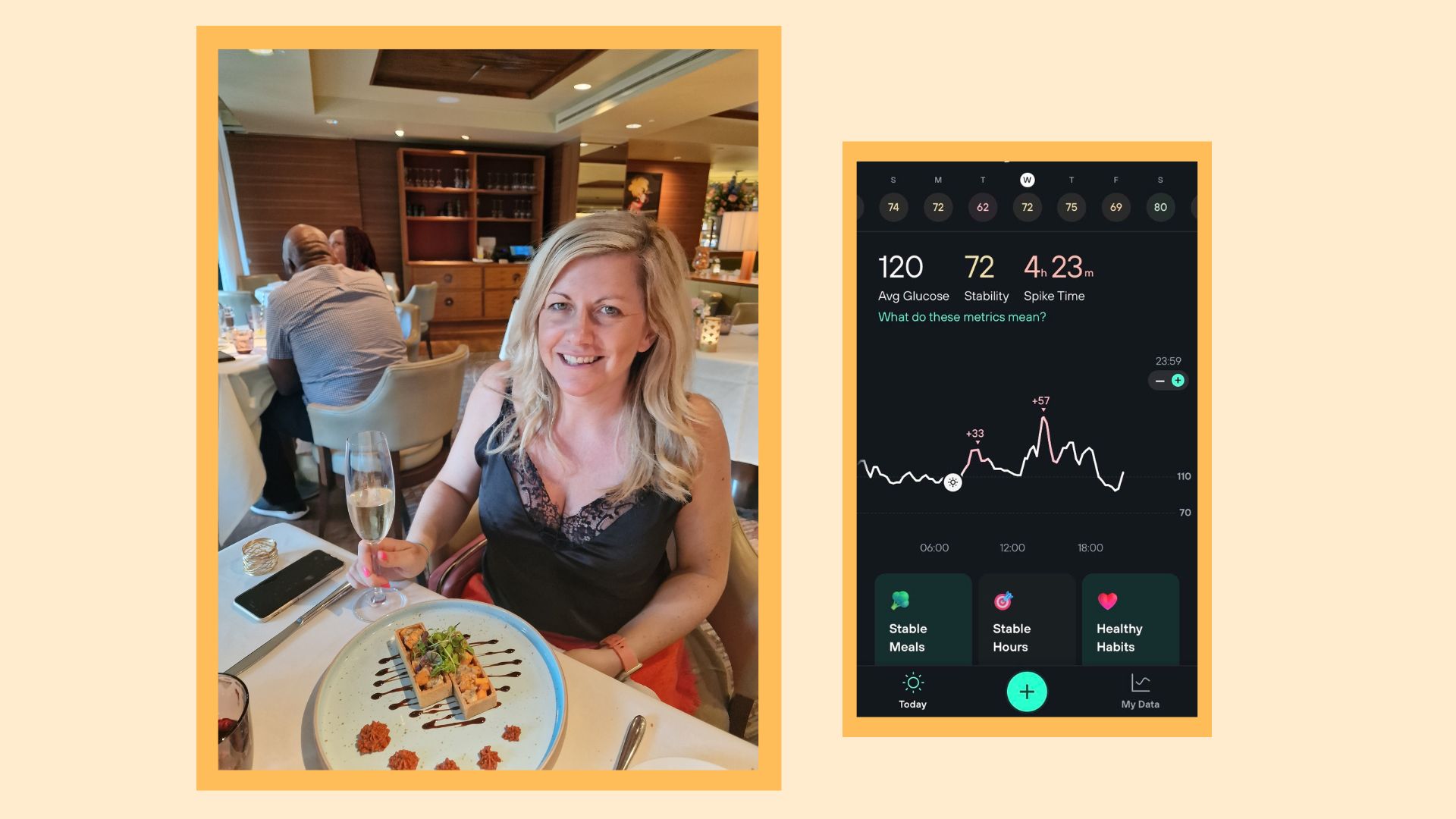

Unless you've been diagnosed with diabetes, you may not be too familiar with the idea of monitoring your glucose levels - otherwise known as your blood sugar levels - or why it can be beneficial. That's understandable, considering that the process could only be done via a blood test at the doctor's office up until a few years ago. Now though, glucose monitoring seems to be the new frontier in personalised nutrition. Here, writer Sarah Finley reveals what she learnt after tracking her food intake and measuring her glucose levels via an app for one month.
I'm sitting at my desk, energy levels depleted after a heavy weekend of too much junk food and wine. I already knew I'd overdone before I even sat down though, as I've been studying my glucose levels (the amount of sugar in my blood) via the Levels app and biosensor on my arm for the last four weeks.
After I've eaten a meal, the Levels app shows me how my blood sugar has been affected - either it spikes or goes up slightly, depending on what I've eaten. Throughout the week, the app scores the number of stable meals, stable blood sugar hours, and healthy habits to build an overall picture of my metabolic health, offering recommendations of what does and doesn't work for me.
In much the same way as founder Josh Clemente and a team of metabolic health researchers created Levels to help people better understand the impact their metabolism (how we convert food into energy) can have on their mood, energy levels, and overall long-term health, I signed up to Levels because I wanted to know more about my body. I'm quite healthy when it comes to my diet and I exercise regularly, but I have the odd slip like anyone else - especially around my time of the month - and after a couple of days of eating badly or drinking too much, I suffer from fatigue, dizziness and low energy levels, especially in the afternoon.
I also wanted to know how my lifestyle now could be affecting my long-term health. Having high blood sugar levels for prolonged periods can cause short-term effects such as weight gain, afternoon slumps, and feeling hungry, but it can also cause long-term effects too, like damaging blood vessels and putting you more at risk of developing health conditions like diabetes and heart disease.
So, I put the glucose monitor to the test to see if I could try and stabilize my blood sugar levels and build a better picture of how my body reacts to different elements of my lifestyle - and this is what I learnt.
What I learnt when I monitored my glucose levels
1. Sugar-laden snacks left me starving
I love snacking. Of course, I know that chocolate and crisps aren't the most nutritious foods, but they're easy to reach for when I'm busy and keep me going through the day. This habit was the first change I made after finishing my month with the biosensor and Levels app though, as I discovered the extent to which these types of snacks were having a negative impact on my body.
Sign up for the woman&home newsletter
Sign up to our free daily email for the latest royal and entertainment news, interesting opinion, expert advice on styling and beauty trends, and no-nonsense guides to the health and wellness questions you want answered.
Looking at the data on my phone, I could see that around 10 minutes after I ate I finished snacking, my blood sugar spiked and quickly crashed down, explaining why I felt unmotivated and even hungrier than I was before.
Nutritionist Joan Abebe explains why this happens: “Whenever we consume sweet sugary food and drinks, our blood sugar levels spike quickly and prompt the pancreas to release insulin to move glucose into our cells and give us energy. However, this swift response often results in a super sharp dip in our blood sugar levels, which then leaves us feeling tired, lethargic and fatigued.”
When I made the switch to healthier snacks like vegetable sticks, nuts and yoghurt, I definitely saw the effect. The app showed my blood sugar level rising, but not as quickly and they didn’t crash with the same effect either, meaning I felt fuller for longer and had more energy.
2. Protein-rich foods and wholegrains sustain my energy
I already ate a lot of protein before signing up to the Levels app, with plenty of salmon, eggs, and chicken in my diet, but I tended to opt for complex carbs such as white rice and bread. Given the amount of starch and sugar (which is basically glucose) in these food products, it shouldn't have been a surprise that the app showed a negative effect on my blood sugar after every meal.
"Choosing brown rice instead of white and natural sweetness in sweet potatoes rather than processed snacks will cause less intense glucose spikes," explains Abebe, while wholegrains have a lower glycaemic index than refined carbs, meaning they’ll digest slower in the body. As soon as I made the swap, I saw a positive change in my stable blood sugar hours and it was interesting to see how much slower the spikes in my blood sugar came down. In turn, I felt much less tired after eating.
However, there were some foods that surprised me. I eat porridge sometimes in the mornings to fuel me before a big day, but this actually made my sugar levels spike and crash really quickly too, presumably thanks to the starch in the oats. It goes to show how much of our nutrition planning should be personal as others I know don't feel the same way post-breakfast time.
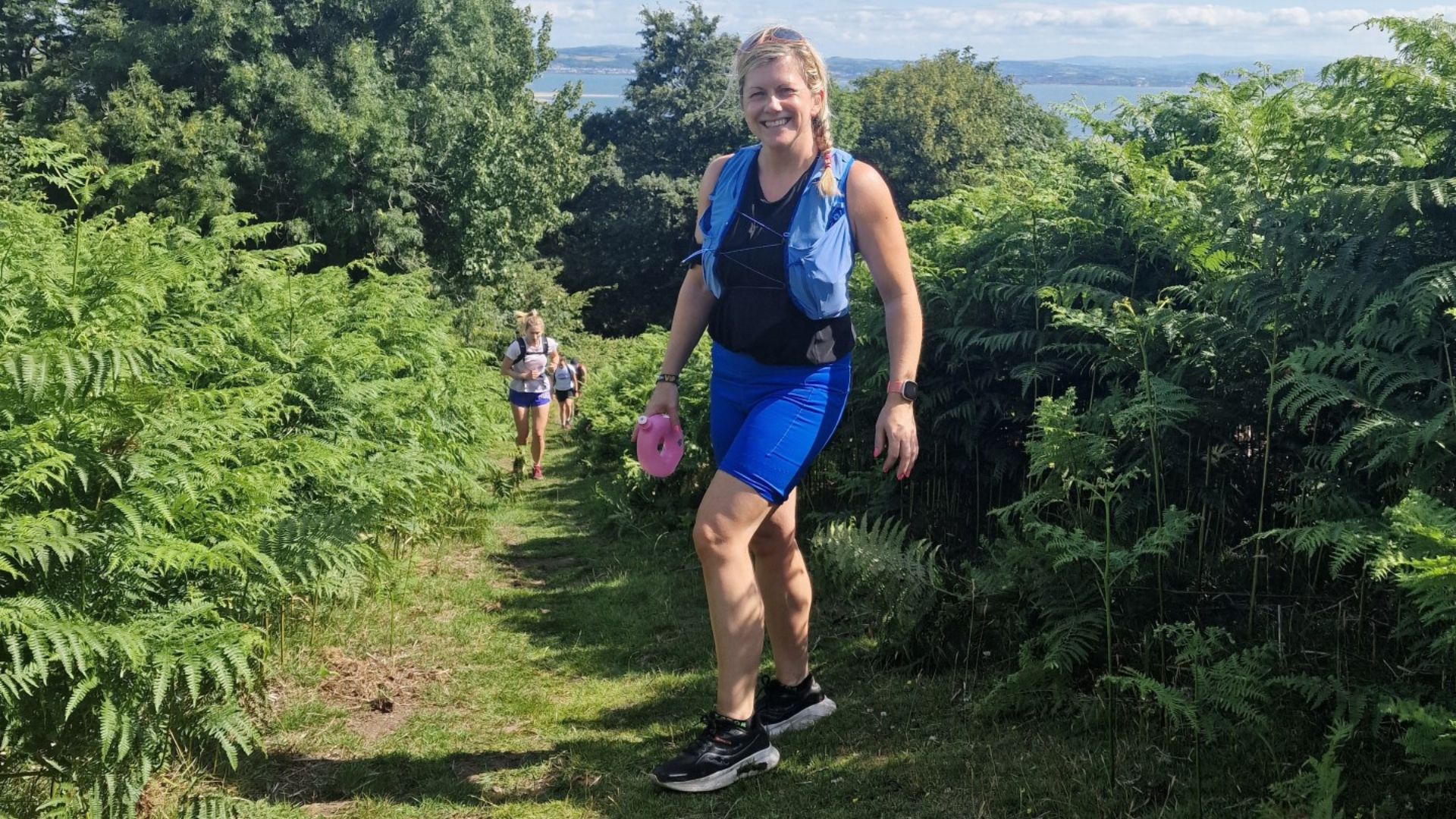
Intense cardio sessions, such as running, can spike your blood glucose levels.
3. Less-intense exercise stabilises my blood sugar levels
I always assumed glucose levels were associated with what you eat, so it certainly surprised me to see that my levels spiked during some exercise sessions, especially touch cardio workouts.
"During exercise, our muscles require energy to perform at our best. If you’re doing a HIIT workout, this can lead to a temporary spike in blood sugar levels due to the body's fight or flight response (when the body releases stress hormones, such as adrenalin). This isn’t necessarily a bad thing as it's a natural mechanism to provide energy to your muscles during intense workouts," says Abebe, who is also a holistic health coach.
While it's not really a negative, I didn't like seeing the stress my five weekly HIIT classes were putting on my body. To balance things out, I introduced some less intense exercise, including Pilates, yoga, and hiking into my fitness routine - and I saw a difference pretty quickly. Switching to these classes not helped me stabilize my glucose levels, meaning I felt less tired throughout the week. It also gave me a newfound love for Reformer Pilates, which has many benefits in its own right.
"If you do low or moderate-intensity exercise, it can have the opposite effect [to high-intensity exercise, which spikes your glucose levels]," the coach explains. "These kinds of exercise promote more muscle movement and performance but don't cause significant stress, which over time, leads to improved insulin sensitivity and helps us to stabilise our blood sugar levels."
4. Pre-workout snacks help with my blood sugar crashes
When I started tracking my glucose levels, I'd often fast in the mornings before going on to do morning or lunchtime workouts at the gym. It was a combination that left me feeling lightheaded more often than not but I couldn't work out why.
After a session, I looked in the app only to find a huge glucose spike over the time I was working out - quickly followed by a massive crash that even a post-workout sugar hit couldn't even out.
The app recommended I eat something small, like half a banana and peanut butter before a workout. Given the debate between the benefits of fasted and non-fasted workouts over the past few years and whether you should eat before or after a workout, I was a little hesitant to try it. However, it's now essential in my routine before I work out. Eating a little before exercise has helped me fuel my workouts and I stopped feeling dizzy almost immediately, even though the early breakfast still caused a slight spike in my blood sugar levels.
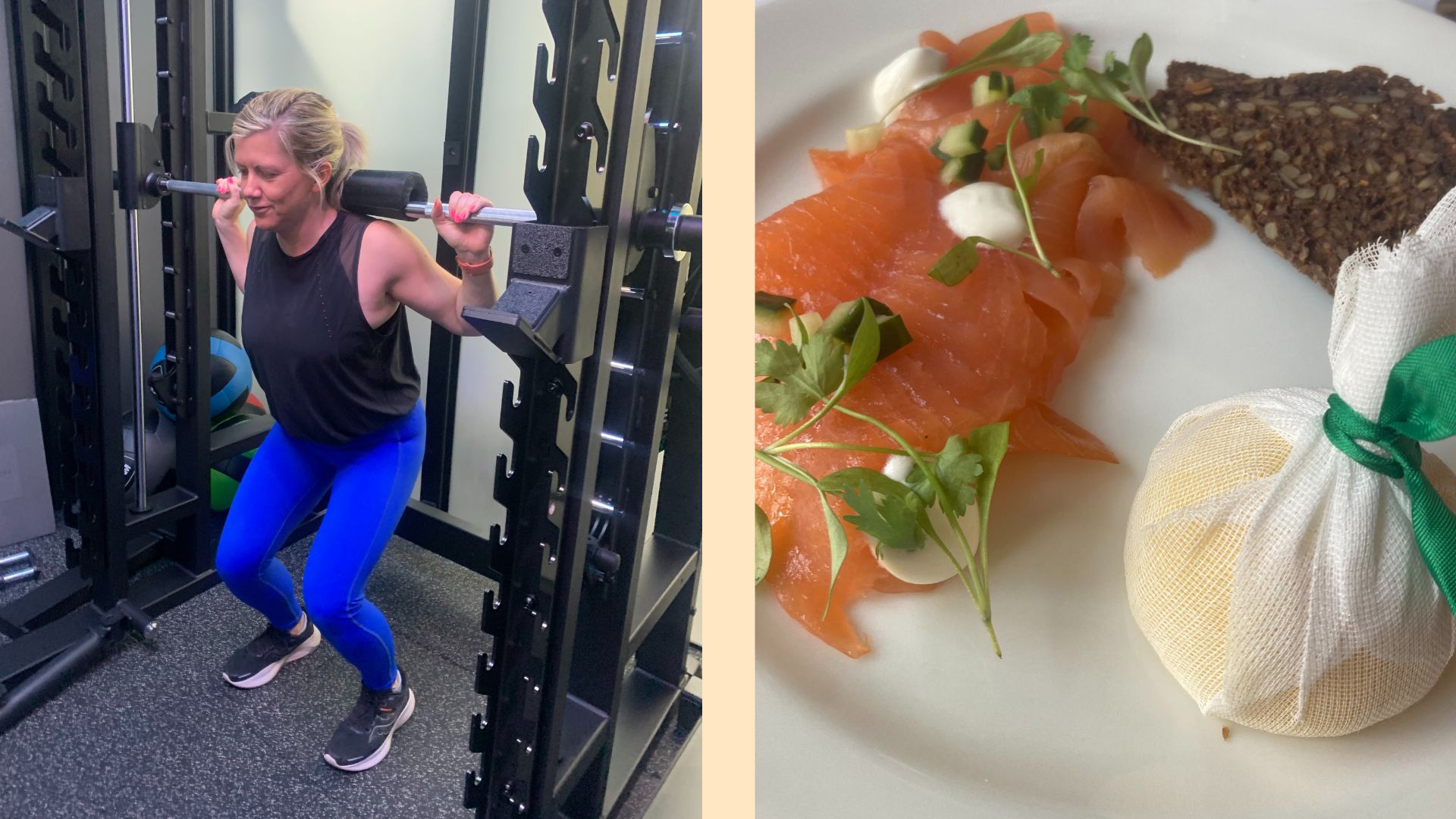
5. Drink in moderation
We all know that drinking in moderation or none at all is the best way forward, what with the success of mindful drinking trends and no-alcohol alternatives over the last few years. Personally, I try to stick to gin and tonics where possible, given that they're pretty much more tonic water than alcohol, but I also find it hard to resist the more sugary choices like wine and cocktails.
A couple of weeks into using the sensor, I could pretty much predict what the results were going to be. But even in my hungover state one morning, it surprised me. The app showed my stable blood sugar hours were lower, while the spike times were sky-high when I was drinking the day before.
Throughout the rest of the trial, I did try and adapt my alcohol intake, and it did have an effect on my energy levels the next day. If I'm honest, this was one of the hardest changes to make for me but, unfortunately, as the health coach explains, it's also one of the most worthwhile. "Alcohol can affect your body's insulin sensitivity, which means it's harder for your blood cells to respond properly to insulin," she says. "Insulin is basically the hormone that regulates your blood sugar and over a long period of time, this weakened insulin sensitivity can develop into insulin resistance and other metabolic issues."
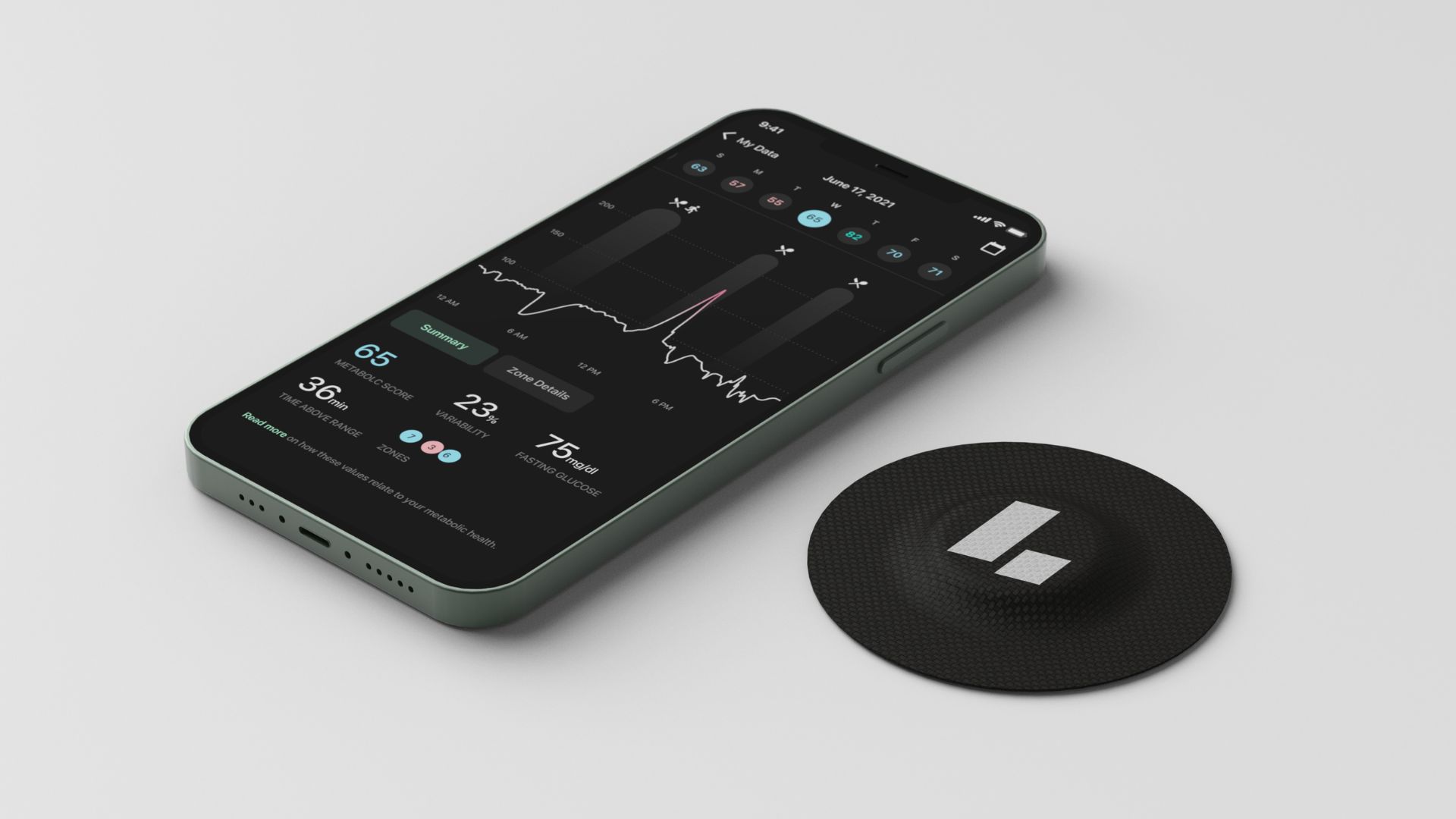
Signing up to the Levels app requires a subscription, which comes with a biosensor that you attach to your arm.
Is it important to track your glucose levels?
Knowing what's going on with your glucose levels gives you an insight into how your body is responding to your food and other lifestyle factors, explains Abebe. “Having that knowledge provides you with a crucial insight into how your body is regulating energy, stabilising your mood and a picture of your overall metabolic health," she says.
Although I had a basic understanding of how sugar affected my body, having a real-time picture was really interesting. It was a personal journey and I recognised that there were elements of my lifestyle not compatible with what I wanted for myself, so the app has primarily served to educate me about making better choices.
When I first started tracking my glucose levels, I struggled to keep them stable with the huge spikes and massive dips with corresponding symptoms. Yet, as I started to make small changes in my diet, my stable hours plateaued. I had more energy and I didn't feel as hungry.
But like anything else, it's about getting the balance right. After all, we're only human and at some point, we're all going to be tempted by a cupcake or a glass of wine.
How to lower your glucose levels
- Look out for hidden sugars: Even meals which are labelled as ‘healthy’ can be hiding sugar, which could spike your blood sugar levels, as I noticed with my porridge. “Educate yourself on the different words that basically mean sugar e.g., fructose, glucose, syrups etc. Understand and recognise these ingredients, dig into the labels, and look at the quantities of sugar and what doesn’t look quite right,” explains Abebe.
- Up your protein: Adding more protein into your diet can be great for muscle building and even keeping you fuller for longer - while it can also help with sugar spikes. “Eating more protein-rich foods such as chicken, tofu, and legumes will slow down the absorption of sugar," she says. "The slower the absorption is, the more sustained energy you’re going to have and that is what prevents a sudden rapid blood sugar spike." If you find it difficult to fit more protein into your diet, try one of the best protein powders for women.
- Avoid sugary cocktails: If switching to alcohol alternatives completely isn't possible for you, try to find the lighter options. Abebe says, “Opt for a dry wine or a spirit with soda water and avoid all the sugary mixers.” Some cocktails, like a mojito, can have over 4g of sugar, for instance, and be loaded with additional calories.
Sarah is a freelance journalist - writing about the royals and celebrities for Woman & Home, fitness and beauty for the Evening Standard and how the world of work has changed due to the pandemic for the BBC.
She also covers a variety of other subjects and loves interviewing leaders and innovators in the beauty, travel and wellness worlds for numerous UK and overseas publications.
As a journalist, she has written thousands of profile pieces - interviewing CEOs, real-life case studies and celebrities - interviewing everyone from Emma Bunton to the founder of Headspace.
-
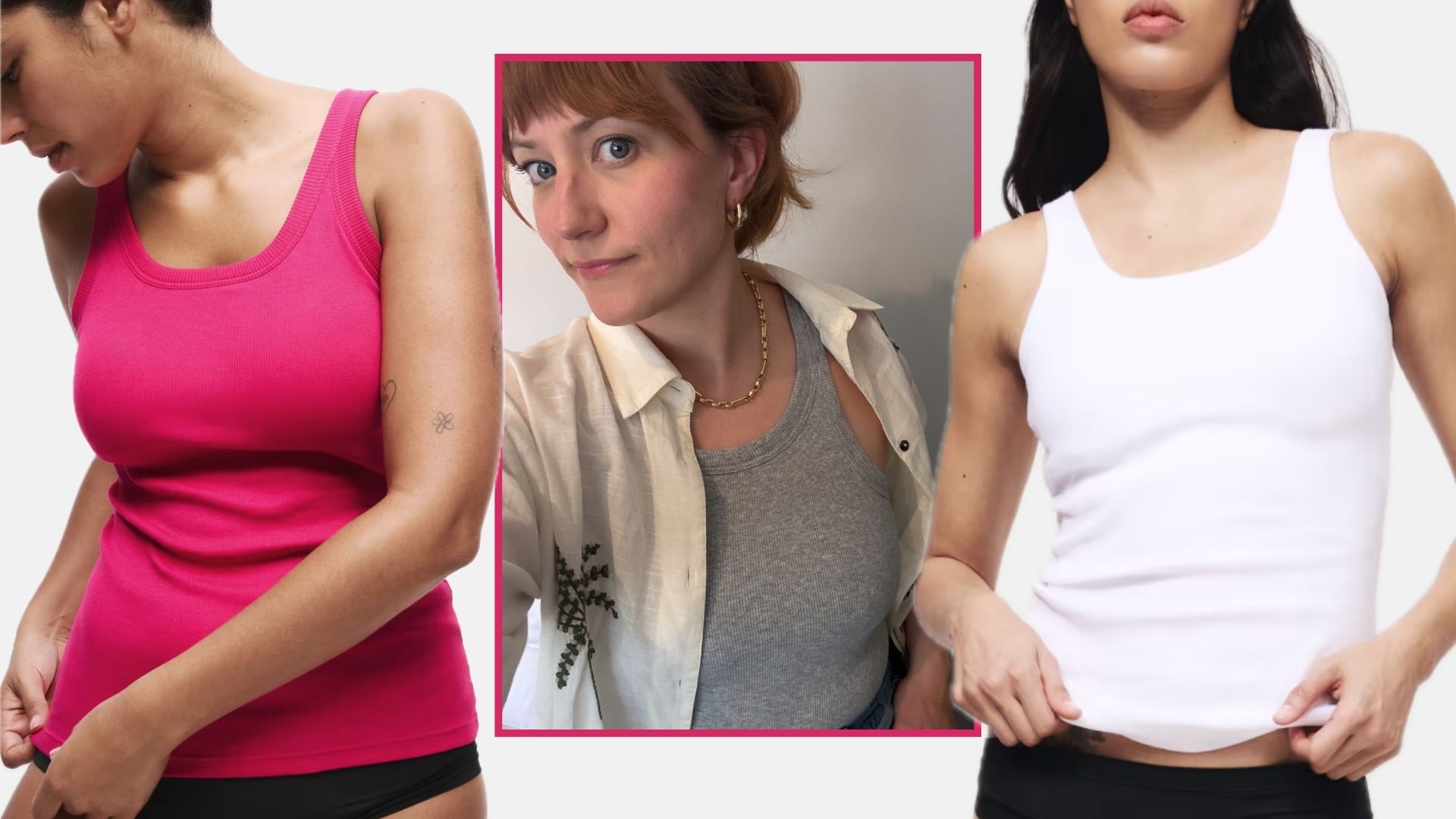 I've bought this M&S hidden support vest in three colours - it's comfy, smoothing and perfect for summer
I've bought this M&S hidden support vest in three colours - it's comfy, smoothing and perfect for summerFor just £12, this everyday base layer comes with plenty of benefits
By Matilda Stanley
-
 We're enjoying the sunny spring weather, but a jumper is still essential - Sienna Miller's pastel pink knit is ideal
We're enjoying the sunny spring weather, but a jumper is still essential - Sienna Miller's pastel pink knit is idealSpring has arrived, but sunny April weather can still come with a chill. We're taking inspiration from Sienna Miller's pastel pink knit
By Charlie Elizabeth Culverhouse